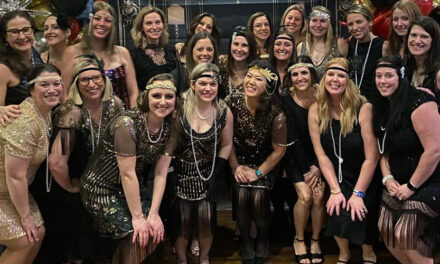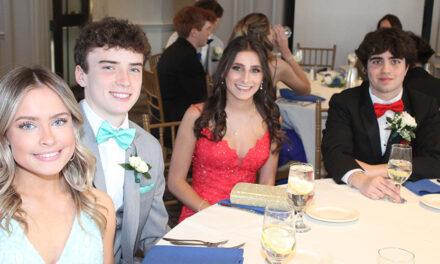Published in the January 18, 2017 edition
By DAN TOMASELLO
LYNNFIELD — The college selection process has changed dramatically over the last 20 years, high school Guidance Department Head Mike Moresco told the School Committee last week.
Moresco said the college admission process has become much more competitive over the course of the past two decades. He said a number of colleges and universities have experienced a spike in the number of applications they receive while simultaneously lowering their acceptance rates.
“Many of us who are over the age of 35 would indeed have a much more challenging time today being accepted to the college we graduated from,” said Moresco. “The game has changed. Colleges have discovered the proven reality that the surest way to increase the number of applications is to lower their acceptance rate each year. Believe it or not, the fewer students a college accepts, the more applications they receive. The more applications they receive and the fewer students they accept, the higher they seem to climb in the U.S. News and World Report annual ratings of colleges.”
Moresco said the main reason why the number of applications submitted to colleges has increased is because a number of schools are using a common application.
“It’s a generic application that is accepted by nearly 600 colleges across the nation,” said Moresco. “Students fill it out once and they can send it off to any of the 600 schools. In most cases, students will only have to write one essay for a common application. Back in the day, you had to write a separate essay for every school you applied to. Those days are done.”
Moresco noted the Internet has enabled “colleges to attract an intergalactic range of applicants.”
“Every major college now has admissions offices in Paris, Rome and Asia, and they actively recruit international students,” said Moresco.
Moresco said the high school and guidance department’s job is to help students and families process different information about the college search process that way students can find the right school.
“We feel our job is to help students and families become educated consumers,” said Moresco. “We want them to make well informed choices.”
According to Moresco, colleges and universities primarily look at three different factors during the admission process. He said one of the main components is a students’ strength of schedule and grade point average (GPA). He said a student’s strength of schedule, which Moresco called “the magic 20,” is based on the four core subject areas as well as foreign language, which are multiplied over the course of a student’s four years in high school.
“A strength of schedule either validates or calls into question a student’s GPA,” said Moresco.
Moresco referenced recent criticism made by School Committee member Jamie Hayman, who said in November he was concerned about high school students not getting into the top colleges. Moresco noted Ivy League schools place a strong emphasis on a student’s schedule. He recalled a story when a panel of college admissions representatives were asked whether they would rather see a student get an A in a college prep course or a B in an honors class during the Guidance Department’s College Rep Panel Night a couple of years ago.
“Most of the schools discussed seeing students challenge themselves and maximizing their potential,” said Moresco. “And when it came to Harvard, (the admissions representative) calmly announced to the audience ‘we at Harvard would expect you to get an A in an honors class.’ When an Ivy League school looks at the magic 20, the competitive applicant better have at least 18 out of 20 classes be honors and/or AP (Advanced Placement) classes.”
Moresco said the high school has 13 AP honors and numerous honors courses available to students.
“We have created a curriculum that provides our students with the opportunity to create a high school transcript that will meet the expectation of any Ivy League admissions staff,” said Moresco. “There is not a class or a course we are missing in our curriculum. We have it all.”
Moresco noted there is a cost for students and families who choose to enroll in only honors and AP courses. He acknowledged students enrolled in only AP and honors courses have heavy workloads, which in turn can cause stress. He also said students and families will often have to make sacrifices such as not going away for vacations due to the amount of homework and projects a student is assigned.
In addition to reviewing a student’s schedule and GPA, Moresco said colleges examine students’ standardized test scores even though a number of schools are now “test optional.” He noted the high school is working to address its SAT scores.
“The average standardized test score from a student accepted by Harvard out of a scale of 1600 was 1540,” said Moresco. “The average Ivy League accepted score was 1510. From the Class of 2016, the average SAT score for one of our applicants to Harvard was 1360. We acknowledge our standardized test scores need attention, and (High School Principal) Bob Cleary and the faculty have begun to make changes to the day in and day out teaching that will hopefully address that.”
Moresco said having parents encourage their children to read at an early age, particularly at home, is a good way to improve students’ standardized test scores.
“Parents have to say to their children put the Xbox down and open a book,” said Moresco. “This isn’t a Lynnfield problem, this is a society program. I think this is a major reason why more Lynnfield students are not being accepted to Ivy League schools.”
Moresco said colleges and universities also look at a student’s impact in extracurricular activities, which Moresco is the biggest change in the application process.
“In the past, colleges looked at extracurricular involvement,” said Moresco. “Those days are gone. The whole notion of the well- rounded student in the eyes of many colleges is passé. Colleges are looking for what impact a student has made in their extracurricular activities. It’s not enough to be in four clubs and three sports. Colleges would rather see a student who finds a passion, nurtures it and makes an impact with their passion. That has been a big change.”
Moresco said the community has done “an outstanding job in creating a number of young people who have made in an impact on our school and our town.”
“We have great kids here, but how many of our youngsters are taking the next step and making a positive impact on our region,” said Moresco. “When you are looking at students accepted to Ivy League schools, you are looking at students who have made a regional and national impact.”
Guidance counselor Kathi Moody agreed.
“This is different than what we have seen in the past as far as what schools are looking for,” said Moody.
Moresco said 78 percent of the Class of 2016 reported that they would attend their first choice college, while 12 percent of graduates said they will be attending their second choice.
“More than 50 percent of all Lynnfield High School graduates reported that the cost of attending college played a major role in determining which college they attended,” said Moresco. “Ninety eight percent of all Lynnfield High School graduates from the Class of 2016 reported that they felt their choice of post-high school options was both appropriate and correct given their individual experience at Lynnfield High School. The town is producing tremendous kids.”
Moresco said parent surveys contain similar results.
Hayman said parents have told him “it feels like our students not getting accepted into the top tier schools.” He said Moresco’s report “answered a lot of questions.”
“There is an assumption people make when people look at the newspaper and see where everyone is going to school,” said Hayman. “People go back to what it was like when they were in high school, and that is all they know. It’s changing and one of the things we need to do is get this information out there because a lot of what is going on right now parents don’t know.”
Search process
Moody gave an overview of the process the guidance department undertakes to prepare students for the college search process.
According to Moody, the counselors begin laying the groundwork for the college application process with freshmen in September, which includes reviewing “graduation and college requirements.”
Moody said the counselors meet with sophomores in small groups in March in order to introduce the Naviance Family Connections program.
According to Moody, the counselors meet with juniors in small groups in January to present a two-day workshop on the college search and selection process. Additionally, Moody said the counselors “meet with each junior individually to assist them in the formation of their post-high school plans.”
“This includes formulating a list of colleges, technical schools, military options and jobs for students to research,” said Moody.
Moresco said the counselors give juniors an overview of what students need to do over the summer to make sure they are ready to tackle the college search process head on during the fall of their senior year.
Moody said the counselors hold a two-day workshop for seniors on the college search process in September. She said the counselors’ meet with each senior individually throughout the year to help students finalize their post-high school plans.
Moresco noted the high school offers programs for parents in addition to students. He said the high school offers night programs that cover different topics, and the high school offers the Breakfast with Guidance program as well.




